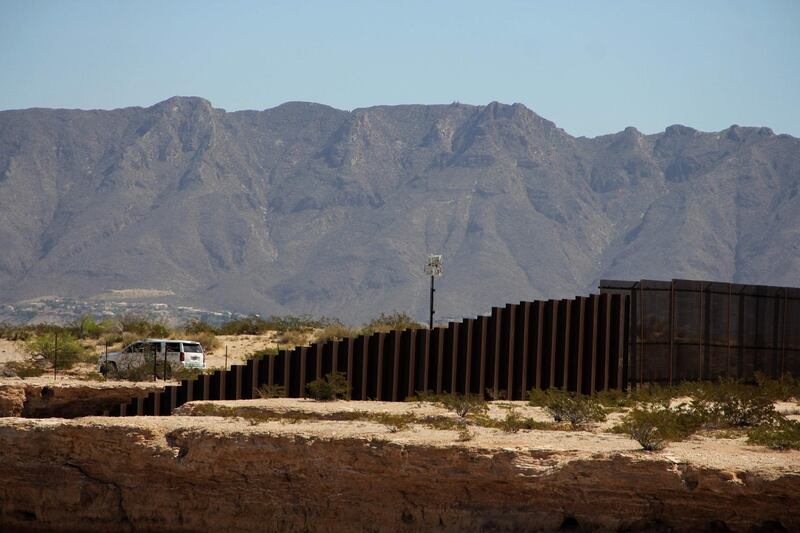National Guard contingents in US states bordering Mexico awaited guidance Thursday on what the duties they’ll be assigned to help fight illegal immigration and drug smuggling along the border, and a Pentagon official said it has not yet been determined whether the troops will be armed.
The deployment is in “very early planning stages,” the National Guard in Texas said in a statement.
In Washington, Marine Lt Gen Kenneth F McKenzie told reporters at the Pentagon that it has not yet been determined how many, if any, of the troops participating in the border security operation will be armed.
With troops in all states, the National Guard has been called on by past presidents and governors to help secure US borders, and the Texas contingent said it had “first-hand knowledge of the mission and operating area” that will allow it to move seamlessly into the new role.
_______________
Read more:
[ Trump outraged over Mexico migrant ‘caravan’ ]
_______________
The Republican governors of the border states of Arizona and New Mexico also welcomed deployment of the guard along the southwest border as a matter of public safety, but it was unclear how Democratic California governor Jerry Brown would respond to Mr Trump’s call.
The president ordered the deployment because “we are at a crisis point” with illegal immigration, secretary Kirstjen Nielsen of the department of homeland security said.
“We’d like to stop it before the numbers get even bigger,” she said.
Though no specifics were provided, Ms Nielsen said guard members would provide support to border officials, “help look at the technology, the surveillance, in some cases we’ll ask for some fleet mechanics” and free up agents trained in law enforcement for other duties.
She said she did not know yet how many guard members would be deployed.
Determining that must “wait until each mission’s set, each location and then work with the governor on how many people.”
Arrests along the US border with Mexico jumped to 50,308 in March, a 37 percent increase from February, and more than triple the same period last year. Border arrests rose 10 of the last 11 months after falling in April 2017 to the lowest since the Department of Homeland Security was created in 2003.
But Republican mayor Dee Margo of El Paso, Texas, told NPR’s Morning Edition on Thursday that he was not convinced extra forces are needed for his border city, which he called “the safest” in the United States.
“We already have a fence that was established during the Bush administration that runs through the city,” he said.
Instead of more troops, Mr Margo said “what I would love to see is a better understanding of what truly goes on the border.”
In Mexico, the country’s politicians put aside differences to condemn Trump’s deployment decision. Mexico’s senate passed a resolution Wednesday calling for the suspension of cooperation on illegal immigration and drug trafficking in retaliation.
US presidents have deployed the military or the National Guard to help the Border Patrol in the past.
In 1997, camouflage-clad US marines ordered to patrol the border for drugs in west Texas shot and killed 18-year-old Esequiel Hernandez Jr while he was herding his family’s goats near the tiny village of Redford, Texas, along the border.
That shooting sparked anger in the region and ended the president Bill Clinton-era military presence along the international line.
After September 11, president George W Bush sent unarmed National Guard units to the border to support federal agents.
Mr Bush sent troops back from June 2006 to July 2008, with guard members performing support duties aimed at freeing up federal agents from routine non-enforcement tasks so they could focus on border security.
They improved lighting at border crossings, extended existing fencing along the international boundary, built roads, monitored remote cameras, operated communications equipment and sat in mobile observation towers watching for people sneaking into the US.
Their presence was especially felt in Palomas, Mexico, a smuggling hub south of the village of Columbus, New Mexico, where the increased presence and equipment was credited with easing illegal northbound immigrant travel.
In 2010, president Barack Obama deployed National Guard troops to the border over fear of increasing drug-trafficking violence.
Those troops worked on intelligence, surveillance and reconnaissance support, analysis and training, and support efforts to block drug trafficking.
They temporarily supplemented Border Patrol agents until Homeland Security could recruit and train additional officers and agents to work on the border. While some were armed for their own self-defense, they were not authorized to make arrests.
During the last two border deployments, the guard’s supporting role was criticized by some people who thought they should be more involved in enforcement.
Today, there are more than 20,000 Border Patrol agents along the US-Mexico boundary, and a number of other federal agencies have a presence as well.






